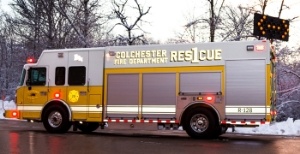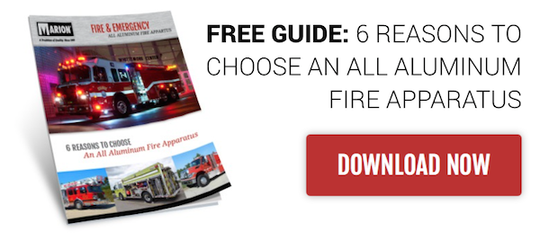
If there’s one thing we know about the apparatus purchasing process, it’s this: no decisions are made without careful deliberation. From the start of the budgeting process all the way down to the final inspection, every single aspect of the new truck has to be given extra thought. When you spend more than $300,000 on something you plan on using for the next 15+ years, you can’t afford to make any mistakes – especially when your community depends it.
To help make sure you’re 110% satisfied with your new apparatus when it’s all said and done, we’ve laid out the framework for some questions your apparatus purchasing committee should answer before starting the specification process. By answering these questions beforehand, not only will your APC get a better idea of what the perfect apparatus might be, but they’ll also help the manufacturer speed up the estimate and build process.
 1. What is the mission of this desired apparatus?
1. What is the mission of this desired apparatus?
Having a clear mission statement for the new apparatus will allow the committee to focus on the needs for the mission. Knowing exactly how the vehicle will deploy and what type of incidents it will respond to will make it much easier to decide what equipment needs to be carried and what is used most often.
2. In order to accomplish the mission from #1, what equipment is needed or desired?
Compile a list of what equipment is transferring from your current vehicle, moving from another apparatus, or being purchased with the new vehicle. Having a list of equipment along with sizes and weights can be helpful in calculating storage compartment configurations and sizes. You can even use the FAMA Weight and Cube Calculator to help with your estimates.
3. What are the physical limitations this apparatus must meet?
Think about things in the community or at station that may limit or prohibit the apparatus (e.g., station door height, station bay width and length, bridge heights throughout the city). Length, height, turning radius, and angle of approach/departure can all factor into the available designs or help determine a chassis type.
4. How many firefighters will be on this apparatus?
On average, how many firefighters respond to each call? What is the best way to safely and comfortably transport personnel to/from the scene? Would this and Question #3 limit the chassis offerings?
5. Does the environment you protect impact the design?
Is the apparatus powered correctly for your terrain? Do you need to address special hazards or weather conditions such as extreme heat or cold?
6. How does the apparatus design impact your department ISO rating?
Would adding an option improve ISO, or does the lack of the item reduce your rating? Being aware of the impacts on ISO when replacing apparatus can be critical for your committee.
7. How can the apparatus help you improve your missions?
One of your top priorities should be reconfiguring the apparatus’ layout so it’s easier to complete common tasks. For example, if you draft more frequently, then perhaps a more easily accessible suction hose would be desired.
8. Is your response changing?
Reviewing the trends and facts about the emergencies you respond to might factor in the apparatus design. Perhaps a growth or decline in an occupancy may impact your calls, so be mindful of your community and goals they have to assure the apparatus can meet those demands.
9. Have you recognized and started to work on a realistic budget?
Figuring out a goal price can impact the list of items you may consider necessary vs. “nice to have”. Trade shows, dealer visits, and recent delivery articles can help you prepare a “ball park” budget for your committee.
Buying a new fire apparatus is a major decision for any fire department. Make sure you get it right by taking the time to answer the 9 questions above, and don’t forget to keep a list of the “must-have” features that correlate with the questions asked.
If you’re ready to start the apparatus purchasing process, talk to your nearest Marion dealer or contact us personally at (715) 754-5261.



